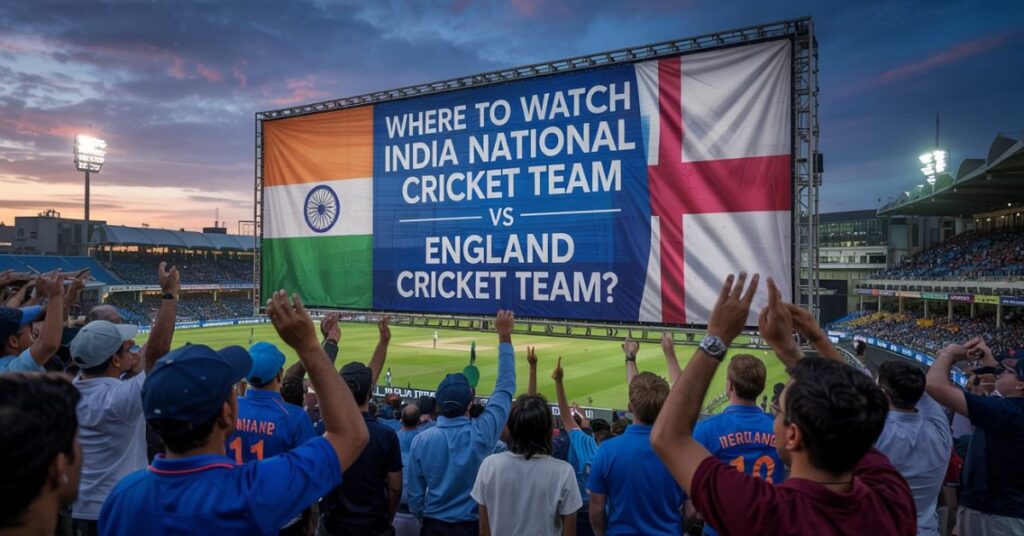Cricket began on the fields of England and steadily spread across oceans, continents, and cultures, eventually becoming one of the most loved sports across the globe. It began as a pastime of the elite. Over time, it grew into an international spectacle. Billions now watch it, stadiums fill up, and towns and villages celebrate it. Fans often ask a simple but important question: how many countries play cricket, and what does that reveal about its global appeal?
Cricket is officially played in 108 ICC member nations (12 Full Members and 96 Associate Members), but its reach goes beyond, with the sport being played in over 120–130 countries worldwide.
The rise of T20 cricket and growth in non-traditional nations like the USA, Germany, and Brazil continue to expand its global appeal.
Key Takeaways:
- Cricket originated in England and now enjoys worldwide popularity.
- The sport is second only to football in terms of global following.
- The International Cricket Council (ICC) governs the structure of world cricket.
- There are 12 Full Members and 96 Associate Members under the ICC, making a total of 108 nations officially recognised.
- Beyond official membership, cricket is played in more than 120 countries through clubs, schools, and communities.
Global Reach of Cricket
Cricket has followers across Asia, Europe, Africa, the Americas, and Oceania, where countries continue to build their connection to the sport. While football may claim the widest following, cricket is often regarded as the second most popular sport globally, with audiences stretching into the billions during marquee tournaments. The Cricket World Cup consistently attracts hundreds of millions of viewers, the Indian Premier League (IPL) generates staggering numbers both in stadium attendance and television ratings, and historic rivalries such as the Ashes between England and Australia remain cultural landmarks. This popularity shows the size of the fan base and proves that the sport adapts well across societies and climates.
How Cricket Is Governed: The Role of the ICC
The International Cricket Council (ICC) regulates cricket worldwide and answers the question of how many countries play the sport. The ICC structures its membership into two key categories: full members and associate members. Full members represent the elite group with the right to play Test cricket, access greater funding, and enjoy full voting rights within the council. The ICC recognises Associate Members as growing cricketing nations that mainly play limited-overs formats such as One Day Internationals (ODIs) and Twenty20 Internationals (T20Is). This division reflects the varying stages of development and infrastructure among cricket-playing countries.
Full Member Nations: The Elite Cricketing Countries
There are currently 12 Full Members of the ICC, and they include India, England, Australia, Pakistan, Sri Lanka, Bangladesh, Afghanistan, New Zealand, South Africa, the West Indies, Zimbabwe, and Ireland. Each of these countries has rich cricketing traditions, world-class players, and passionate fan bases that sustain the global appeal of the sport.
Full Members hold the unique right to play Test cricket, a format often regarded as the highest standard of the game due to its intensity, duration, and strategic depth. These nations have shaped cricket’s history with World Cup triumphs and legendary rivalries. Their unforgettable performances continue to inspire emerging cricket nations.
Associate Member Nations: Growing Cricket Countries
Beyond the elite, there are 96 Associate Members of the ICC, making them a vital force in spreading cricket’s influence. Many of these nations compete regularly in T20 internationals, and their players and fans take part actively in global competitions. Countries such as Nepal, Scotland, the Netherlands, the United Arab Emirates, Namibia, and the United States have developed competitive teams that have recorded memorable victories against established Full Members. Their progress shows how many countries play cricket seriously, even without Test status. It displays the growing opportunities for exposure through T20.
Affiliate Members:
Until 2017, the ICC also recognised Affiliate Members, which represented smaller cricketing communities with limited resources and infrastructure. The ICC merged all affiliates into the associate category to simplify governance. While this change reduced confusion about membership levels, it did not alter the fact that cricket is practised in many more places than the ICC’s list of members officially reflects.
How Many Countries Play International Cricket?
The direct answer is clear: there are 108 ICC members, made up of 12 full members and 96 associate members. However, the actual count of how many countries play cricket at an international level extends even further. In 2019, the ICC granted T20 International status to all member nations, so every recognised cricket country can now play official T20 internationals. This move not only broadened opportunities but also allowed smaller nations to experience the thrill of competing under the global spotlight, thereby contributing to the sport’s continuous growth.
Cricket Beyond ICC Membership
While ICC membership provides structure and recognition, the reach of cricket extends far beyond those official numbers. Many countries outside the ICC run cricket clubs, schools, and community tournaments. In several European, Asian, and African nations, cricket thrives among expatriate populations, often serving as a link back to their home cultures. Cricket reaches over 120 to 130 countries through local leagues, schools, or independent federations. This wide base demonstrates the remarkable spread of the game, far surpassing the 108 members recorded by the ICC.
Growth of Cricket in Non-Traditional Nations
The rise of cricket in countries not historically linked to the sport further answers the question of how many countries play cricket. For example, the United States co-hosted the 2024 T20 World Cup, introducing millions of new fans to international cricket. Germany, Brazil, Japan, and even China have started grassroots programs, backed by local interest and immigrant communities. The popularity of the T20 format drives this expansion because shorter matches make the game more accessible and appealing in competitive sports markets. These developments show that cricket’s reach is neither static nor confined to its traditional bases.
Final Take:
So, how many countries play cricket? Officially, the ICC counts 108 member nations, with 12 full members and 96 associate members. Yet in reality, cricket extends well beyond those numbers, touching the lives of players and fans in more than 120 nations across every continent. The growth of T20 cricket and initiatives in emerging markets promise a strong future. Cricket keeps spreading and adapting, and more countries will likely join the global chorus that celebrates the game.
Key Points to Remember
- Cricket is officially played in 108 ICC member nations.
- Full Members (12) can play Test cricket, while Associate Members (96) focus mainly on limited-overs formats.
- T20 International status now applies to all member nations.
- Beyond the ICC, cricket is played in 120–130 countries in various forms.
- New markets such as the USA, Germany, and Brazil are becoming important for cricket’s global growth.

